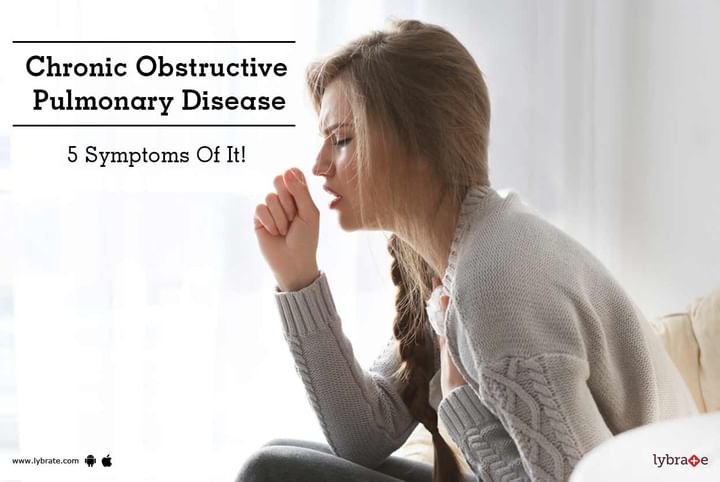Chronic Obstructive Pulmonary Disease - 5 Symptoms Of It!
The lungs are made of tubes through which air passes in and out for exchange of gases, taking in alveoli. It is disease of alveoli to which finer air conducting tubes are attached. Over a period of time, with age and exposure to various agents, these tubules get obstructed. The amount of air that can pass through these is reduced, leading to reduced oxygen supply to the lungs and thereby the various body organs.
Symptoms: The symptoms of COPD can be easily understood if we realize how COPD is caused. The progressive blockage of the air tubes causes less oxygen to reach the tissues, which is the most essential agent for all tissues and organs to function. Reduced supply produces a generalized limitation in physical activity. There are two main components to COPD - chronic bronchitis and emphysema. The symptoms indicative of COPD are as follows:
- Chronic cough - Also referred to as smoker's cough, the cough is relentless and does not subside with regular cough treatment. This is one of the first indications of COPD.
- Mucus buildup - There is constant build up of mucus which gets expelled during coughing. The person never feels completely clear of mucus, and the regular cough expectorants do not help relieve the symptoms.
- Fatigue associated with limited activity - As noted earlier, the reduced capacity of the organs limits their activities. Therefore, regular activities like walking short distances or climbing stairs can induce fatigue.
- Shortness of breath - The above fatigue is associated with shortness of breath, even with small physical exertion. A person with COPD will see marked tiredness and reduced ability to perform routine chores and feel a tightness in the chest.
- Wheezing - Passage of air through the obstructed air tubes produces a whistling sound or wheezing. It is more pronounced when there is mucus accumulation in the airways.
Rarely, Frequent respiratory infections, more frequent flu attacks, swelling of the feet and ankles, cardiovascular disease, weight loss, and morning headaches.
Treatment:
While there is no cure for COPD, once it sets, the following are some ways to slow its progression and reduce severity of the symptoms:
- Bronchodilators - Dilate the air tubes and ease flow of air
- Corticosteroids - Help reduce inflammation and thereby improve airflow through the tubes
- Flu vaccination - Helps curb the frequent flu attacks
- Antibiotics - To contain infections
- Pulmonary rehabilitation - A combination of breathing exercise and patient education to improve lung function.
- Oxygen therapy - In very severe cases, oxygen may be required.
- Lifestyle changes - Eating healthy foods, preventing exposure to dust and smoke, quitting smoking, breathing exercises, bi-annual medical check-ups to monitor lung functions are essential.
Knowing that you have COPD is the first step towards managing COPD, which can be managed effectively.
In case you have a concern or query you can always consult an expert & get answers to your questions!



+1.svg)
